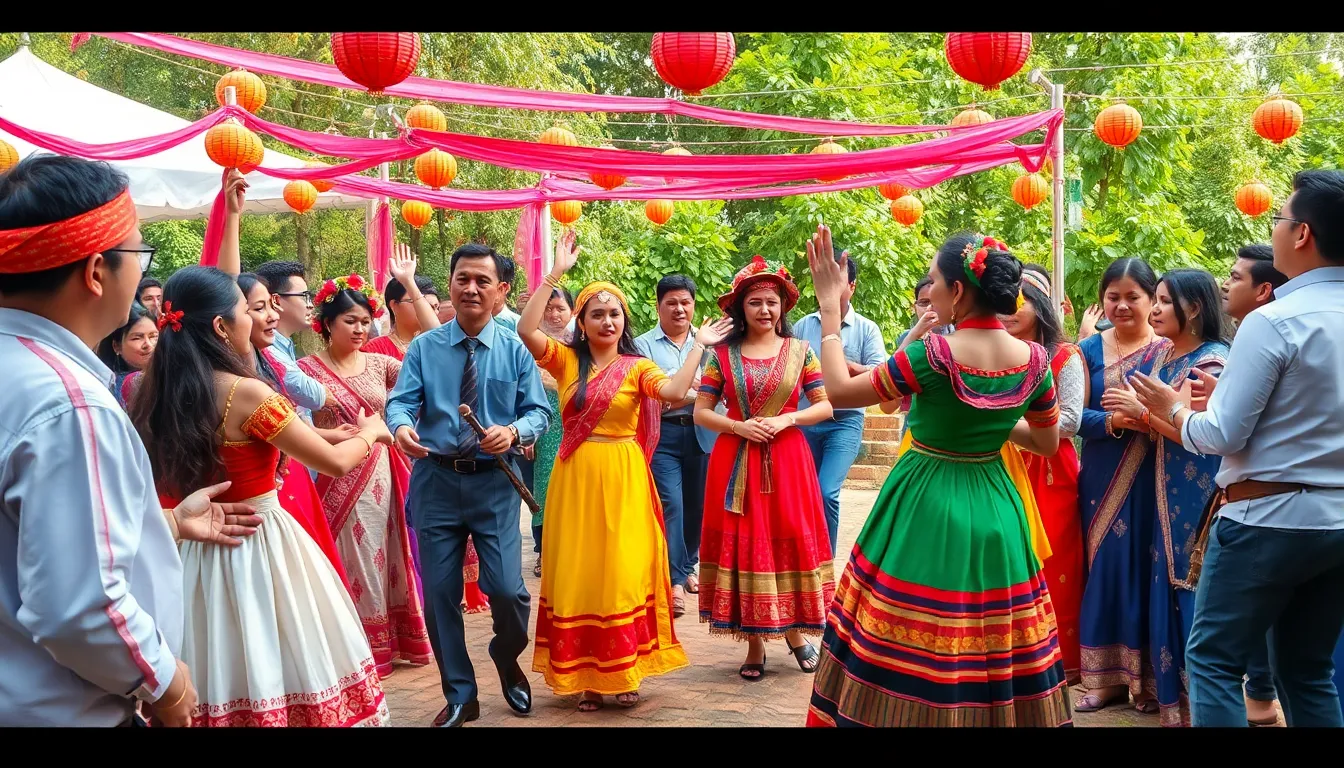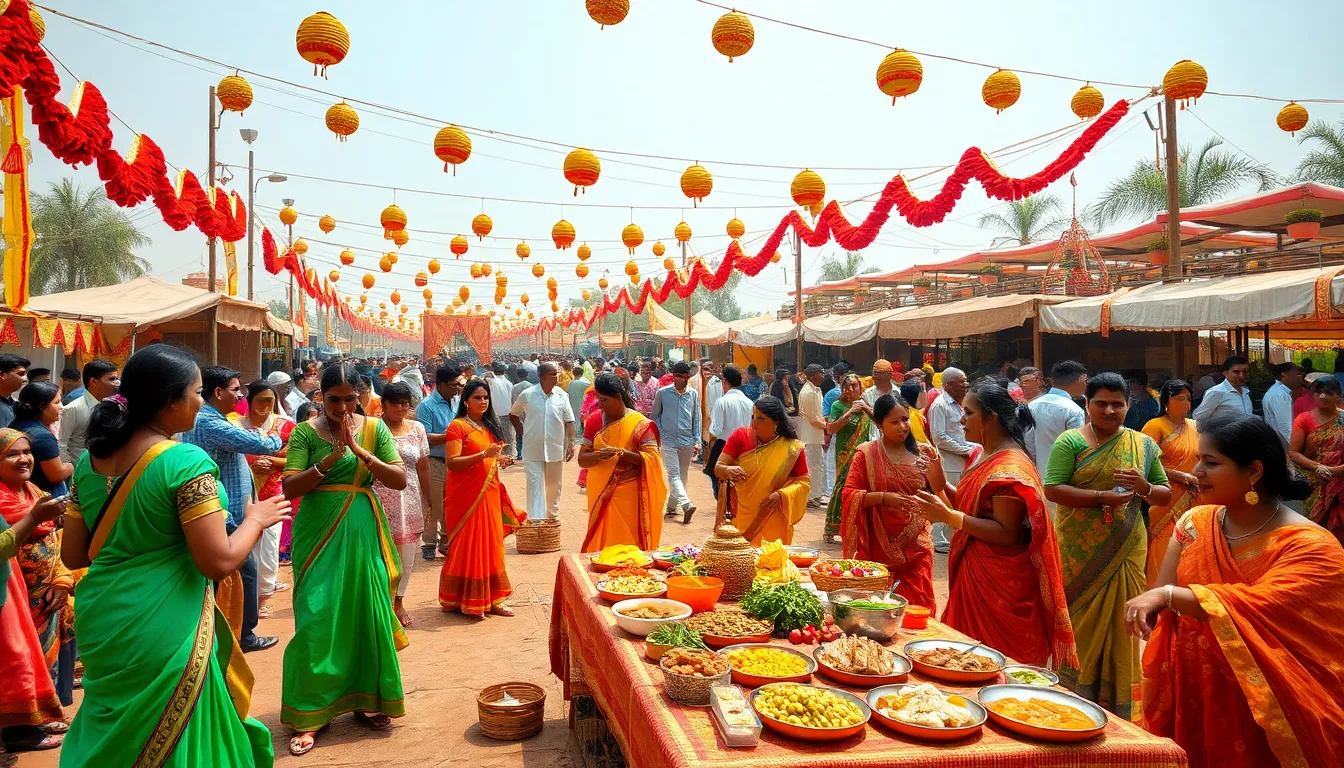In the vibrant tapestry of Indian culture, few things capture the imagination quite like jharaahar. This unique tradition, often shrouded in mystery, brings together the old and the new in a delightful dance that keeps everyone guessing. Picture this: a celebration where laughter echoes, stories unfold, and the spirit of community thrives. It’s not just an event; it’s an experience that tickles the senses and warms the heart.
Table of Contents
ToggleOverview of Jharaahar
Jharaahar embodies rich traditions interwoven into Indian culture. This vibrant celebration highlights the importance of community and interpersonal connections. Participants engage in activities that promote laughter and storytelling, creating an immersive experience.
Festivities often include traditional music and dance, fostering a joyful atmosphere. Each celebration typically occurs in open spaces, allowing for large gatherings. Food also plays a crucial role, with a variety of local dishes shared among attendees, enhancing camaraderie.
Jharaahar reflects the harmony between cultural heritage and contemporary practices, showcasing diverse regional variations. Families and friends come together during this time, strengthening social bonds. Events surrounding jharaahar frequently feature crafts and local artisans, promoting cultural appreciation.
This celebration encourages participation from all age groups, making it inclusive and accessible. Celebrants often dress in vibrant traditional attire, further highlighting the event’s visual appeal. The energy and enthusiasm of jharaahar resonate through its vibrant activities and sense of togetherness.
Ultimately, jharaahar is more than a festival; it serves as a reminder of the importance of unity and cultural pride. This collective spirit enriches the experience and leaves lasting memories for all who partake.
Historical Significance of Jharaahar

Jharaahar holds a significant place in the tapestry of Indian cultural traditions. It serves as a celebrated reminder of community values and continuity of heritage.
Cultural Impact
Cultural practices during jharaahar foster deep connections among participants. Stories and music create an immersive atmosphere, blending generations and encouraging engagement. Celebrants often perform traditional dances, reinforcing cultural identity and shared experiences. Local artisans gain visibility, showcasing their craft to a wider audience. These exchanges cultivate appreciation for artistic heritage and serve to educate younger generations. By bringing people together, jharaahar strengthens social bonds and promotes cultural pride.
Traditional Uses
Traditionally, jharaahar involves various rituals that mark the passage of seasons or important life events. Participants engage in food sharing, allowing local cuisine to shine and promote communal dining. Specific dishes feature prominently, representing regional flavors and culinary techniques. Additionally, the use of traditional attire enhances the cultural significance of the event. Dress not only showcases local craftsmanship but signifies participation in shared heritage. Through these practices, jharaahar celebrates enduring traditions while adapting to contemporary contexts.
Characteristics of Jharaahar
Jharaahar showcases distinctive characteristics that reflect its cultural significance in India. Various elements contribute to its vibrant and engaging atmosphere.
Physical Attributes
Jharaahar features colorful decorations that transform open spaces into festive environments. Vibrant traditional attire adds to the visual richness, with participants donning intricate garments representing regional styles. Entertainment often includes live music, which energizes the atmosphere and encourages dance among attendees of all ages. Artisans display handmade crafts, showcasing local talent and creativity, which further enhances the festive experience. Additionally, the inclusion of traditional rituals invites a deep sense of connection to heritage, allowing everyone to participate meaningfully.
Culinary Applications
Culinary aspects of jharaahar play a central role in fostering community spirit. Feast tables brim with a diverse array of local dishes that reflect regional flavors and traditions. Food sharing among participants promotes bonding and creates a warm, inviting environment. Street vendors often contribute to the culinary experience, offering popular snacks and sweets that evoke nostalgia. Traditional recipes often resurface during the celebration, allowing families to pass down time-honored cooking methods. Sharing meals strengthens relationships and marks the importance of communal dining in jharaahar, deepening cultural appreciation across generations.
Health Benefits of Jharaahar
Jharaahar promotes several health benefits that complement its cultural significance. Engaging in traditional dances enhances physical fitness, improving cardiovascular health while fostering coordination and flexibility. Celebrants often participate in communal activities that stimulate social interaction, benefiting mental well-being and reducing feelings of loneliness.
Culinary aspects of jharaahar also play a significant role in health. Local dishes, rich in seasonal vegetables and spices, provide essential nutrients. Sharing meals encourages a balanced diet, as participants savor a variety of flavors and textures, promoting healthy eating habits.
Additionally, the outdoor environment during celebrations offers exposure to sunlight, which contributes to vitamin D synthesis. This can help strengthen bones and boost the immune system. Gathering in large groups aids in forming bonds, fostering a sense of belonging, which is vital for emotional health.
Artisan displays and traditional crafts involved in jharaahar encourage mindfulness and creativity. Engaging in these activities can reduce stress levels, allowing individuals to find peace within the vibrancy of the celebration. Family-friendly events also allow children to learn cultural traditions, instilling a sense of identity from an early age.
Furthermore, the emphasis on community support during jharaahar fosters emotional resilience. By sharing stories and experiences, participants develop coping mechanisms, enhancing their overall mental health. Active participation shrinks barriers between generations, enabling older individuals to transfer wisdom to younger ones, which strengthens family ties.
Thus, jharaahar not only serves as a vibrant celebration but also contributes positively to physical and mental well-being. Its rich cultural heritage wraps around aspects that promote a healthier lifestyle for all participants.
Modern Relevance and Trends
Jharaahar continues to evolve, reflecting contemporary values alongside traditional practices. Festivals now embrace technology, utilizing social media platforms for promotion and engagement, thereby expanding reach. Virtual participation has emerged, allowing those unable to attend in person to join the festivities.
Inclusivity remains a strong trend within jharaahar celebrations. Families actively participate, and communities welcome diverse cultural expressions, enriching the event further. Various regions showcase unique interpretations, introducing fusion styles in music and dance while retaining core traditions.
Sustainability has become a key focus as well. Many organizers implement eco-friendly practices, such as using biodegradable decorations and reducing waste. Artisans often prioritize sustainable materials, thus supporting local economies and environmental health.
Networking opportunities arise during jharaahar, allowing artisans, chefs, and performers to connect. Collaborations lead to innovative creations that reflect collective efforts, enhancing the festive atmosphere. New culinary trends surface, with local chefs experimenting by incorporating modern twists on traditional recipes.
Health awareness integrates itself into jharaahar activities. Many participants engage in traditional dances, which promote fitness while offering mental health benefits. Local dishes often feature seasonal fruits and vegetables, contributing to healthy eating habits that resonate with today’s health-conscious society.
Cultural pride remains at the forefront, as jharaahar celebrates community heritage. Participants dress in vibrant regional attire, maintaining authenticity while also showcasing contemporary fashion influences. Each event fosters a sense of belonging, urging individuals to embrace and pass down their cultural narratives.
Overall, jharaahar serves not just as a celebration but as a dynamic reflection of modern society, weaving together the threads of tradition, inclusivity, sustainability, and health awareness into a vibrant tapestry that resonates widely.
Jharaahar stands as a vibrant testament to the richness of Indian culture. It fosters community spirit and celebrates the beauty of tradition while embracing modern values. The festival’s unique blend of music, dance, and culinary delights creates an immersive experience that resonates with participants of all ages.
As jharaahar continues to evolve, it remains a platform for cultural expression and social bonding. By promoting inclusivity and sustainability, it reflects contemporary society’s values while honoring its heritage. This celebration not only enriches the lives of those who partake but also strengthens the connections that bind communities together.




